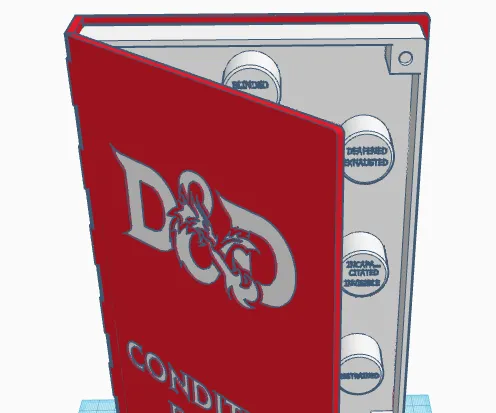Building Your Own Custom Board Game Table with Built-in Storage: A Step-by-Step Guide

As an avid board game enthusiast, you know the struggle of finding the perfect table to accommodate your gaming nights. Kitchen tables are often too small, pieces fall off, and games get interrupted for meals. Pre-built gaming tables with built-in storage can be prohibitively expensive. But what if you could build your own custom board game table, tailored to your needs and budget?
That’s exactly what I, Robert Kline, set out to do, and the result was a beautiful, functional gaming table that has transformed our game nights. In this comprehensive guide, I’ll walk you through each step of the process, sharing my design choices, tips, and even a few lessons learned along the way.
This isn’t just about building a table; it’s about creating a dedicated space for shared experiences, laughter, and epic game nights with friends and family.
Project Overview
This DIY board game table boasts a recessed playing surface to keep your game contained, built-in storage for all your favorite games, and a classic design that complements any decor.
Key Features:
- Recessed Playing Surface: Keeps game components organized and prevents spills.
- Built-in Storage: Shelves provide ample space for board games, card games, and accessories.
- Sturdy Construction: Designed for stability and durability to withstand years of gaming.
- Customizable Design: Adjust dimensions and materials to suit your space and preferences.
- Cost-Effective: Significantly more affordable than purchasing a pre-built gaming table.
 Tinkercad – Book Storage Container for RPG Condition Rings
Tinkercad – Book Storage Container for RPG Condition Rings
Tools and Materials
Before we begin, gather the following tools and materials:
Tools:
- Circular Saw
- Router
- Random Orbital Sander
- Drill with Bits (including a countersink bit)
- Clamps
- Hammer
- Tape Measure
- Pencil
- Safety Glasses
Materials:
Table Top:
- One sheet of 1/2-inch plywood (4′ x 8′)
- Seven 2″x4″x8′ boards (for the frame)
- Red oak lumber (various dimensions for the playing surface, riser walls, and armrests)
- Poplar lumber (various dimensions for supporting the oak pieces)
- Wood Glue
- Wood Screws (1.25″ and 2.5″)
- Stain
- Urethane
- Brushes
Base:
- Two sheets of 3/4-inch red oak plywood (4’x8′)
- Shelf Pins
- Red oak lumber for trim (optional)
- Wood Glue
- Wood Screws
Optional:
- Roll of 3mm neoprene rubber mat with nylon on one side (for the playing surface)
Note: The exact dimensions of lumber can be adjusted to suit your desired table size. I recommend using hardwood like oak for the visible parts of the table for its durability and aesthetic appeal. Poplar is a good, cost-effective choice for the hidden structural components.
Step-by-Step Building Instructions
1. Determining Your Table Dimensions
The first step is to decide on the overall dimensions of your table. I recommend a playing surface of at least 3.5′ x 5.5′ to comfortably accommodate most board games. Factor in an additional 3″ on each side for the armrests and outer frame.
For a comfortable playing height, aim for a total table height of 29″, with a recessed playing surface about 2.25″ deep.
2. Constructing the Table Top Frame
-
Build the Frame: Using 2×4 lumber, construct a rectangular frame according to your determined dimensions. Use a circular saw to cut dados (grooves) where the boards intersect for added stability. Secure the frame with wood glue and 1.25″ wood screws, making sure to countersink the screws to ensure a flush surface for the plywood.
-
Add the Playing Surface: Cut a sheet of 1/2″ plywood to fit snugly within the frame, leaving a 1/8″ overhang on all sides. Secure the plywood to the frame with glue and screws, focusing on the outer edges to maintain a smooth playing surface.
3. Creating the Recessed Playing Area
-
Install the Riser Walls: Cut strips of red oak lumber to create the inner walls of the recessed area. Attach these strips to the plywood using wood glue and screws.
-
Add the Outer Walls: To conceal the frame and plywood edges, attach wider pieces of red oak lumber to the outer sides of the riser walls. This creates the illusion of a solid oak tabletop.
4. Attaching the Armrests
-
Cut and Shape the Armrests: Cut red oak lumber to the desired length for your armrests. Miter the ends at a 45-degree angle for a polished look. Use a router with a round-over bit to smooth and shape the edges of the armrests.
-
Attach the Armrests: Apply wood glue to the top edges of the riser walls and carefully position the armrests. Use clamps to hold them securely in place while the glue dries. Once dry, use a router with a flush trim bit to create a seamless transition between the armrests and the riser walls.
 CNC Tutorial: Image to Vector
CNC Tutorial: Image to Vector
5. Building the Table Base
-
Construct the Base Frame: Use 3/4″ plywood to build a sturdy base frame that’s slightly smaller than your tabletop. I recommend a pedestal-style base with a central divider for optimal support and storage space.
-
Add Shelves: Install shelves at desired heights within the base frame, using shelf pins for adjustability.
-
Add Trim: For a finished look, attach trim pieces to the exposed edges of the plywood base.
6. Finishing Touches
-
Sanding: Once the table and base are fully assembled, sand all surfaces thoroughly. Start with a coarser grit sandpaper and gradually work your way up to a finer grit for a smooth finish.
-
Staining and Sealing: Apply your desired stain color to the table and base. Allow the stain to dry completely before applying several coats of urethane sealant for protection and a polished look.
7. Assembling the Table
-
Attach the Top to the Base: Carefully position the tabletop upside down on a protected surface. Center the base on top of the tabletop and secure it using screws. Be sure to countersink the screws to prevent scratching.
-
Add a Playing Surface (Optional): For a quieter and more comfortable playing experience, consider adhering a sheet of neoprene or felt to the recessed playing surface.
Conclusion and Final Thoughts
Congratulations! You’ve now built your very own custom board game table. This unique and functional piece of furniture is sure to become a cherished centerpiece for countless hours of entertainment.
Remember to personalize your table by choosing finishes, adding accessories like cup holders or felt-lined drawers, and organizing your game collection on the shelves.
Share your creation with the world by posting pictures of your finished table on social media and tag Robert Kline Art! I’d love to see your unique take on this project.
For more inspiring DIY projects and crafting ideas, be sure to explore the rest of the Robert Kline Art website. Happy gaming!
